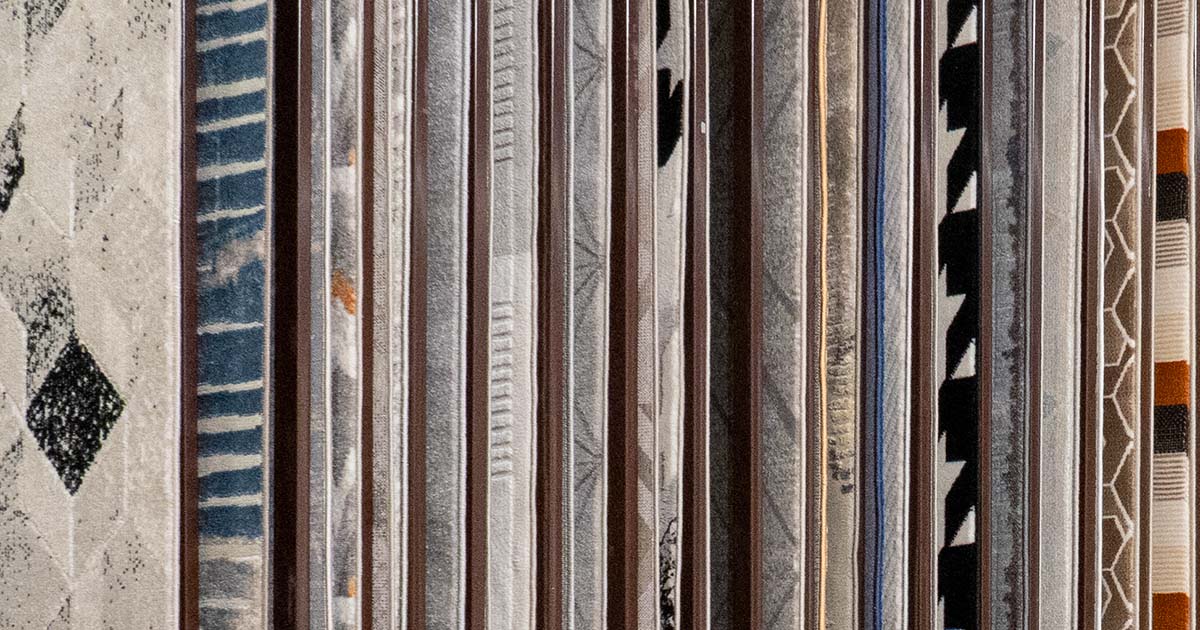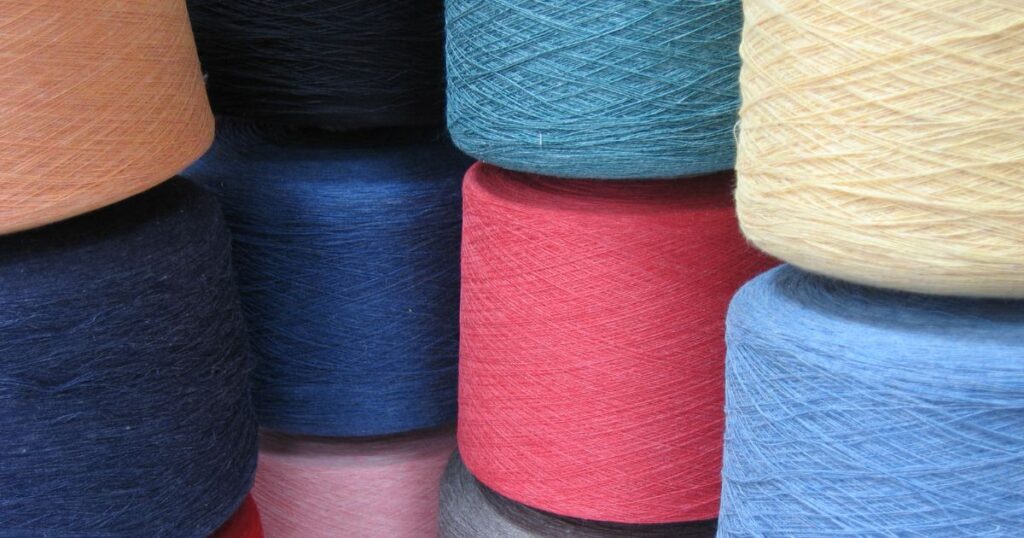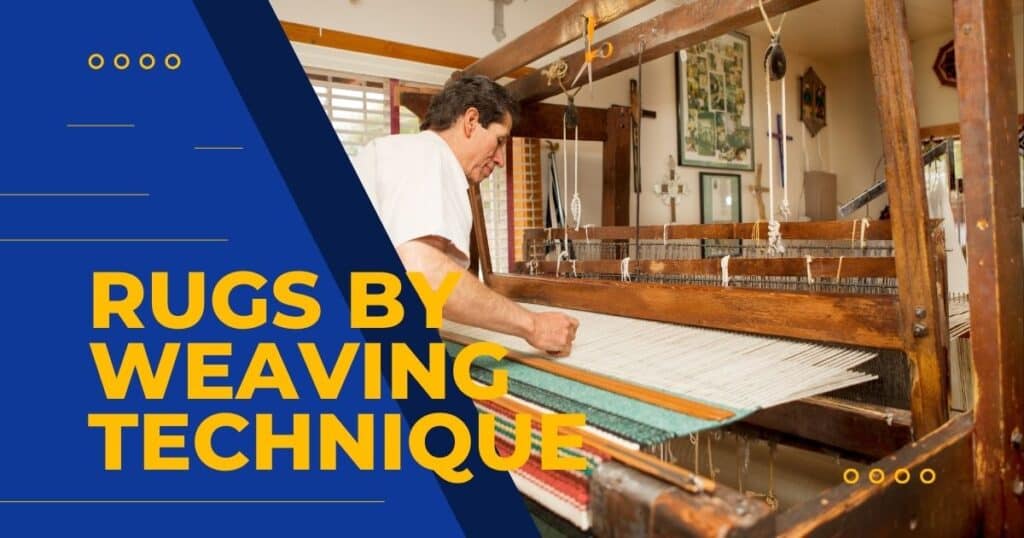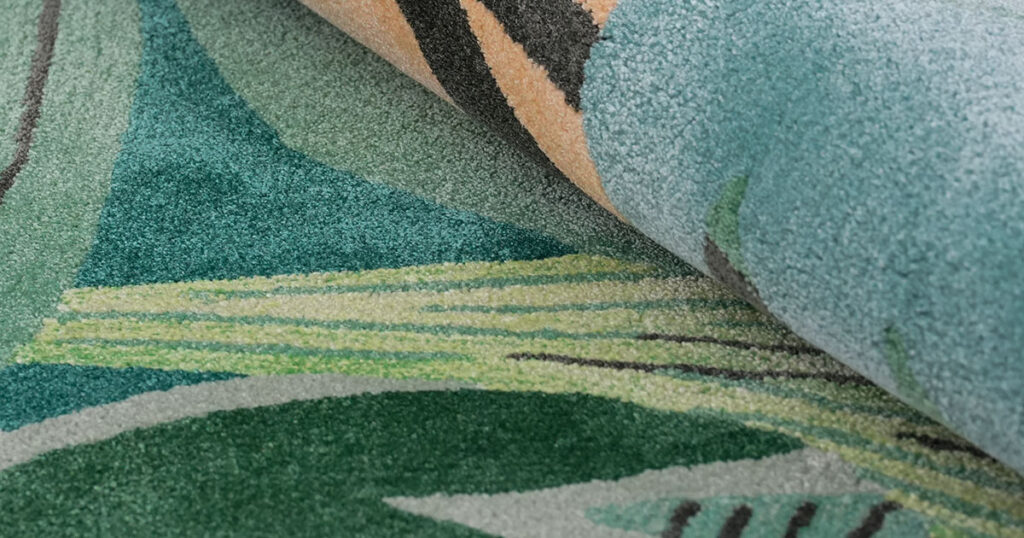“Custom tufted rugs are too expensive.”
“They’re difficult to maintain.”
“They won’t last as long as other rugs.”
These are common concerns I hear from people shopping for rugs.
Mirugcle can tell you – many assumptions about tufted rugs need clarification, based on the fact that we’ve tufted over 12,000 rugs and help thousands of buyers each year.
Decoding Your Rug’s DNA: Understanding the Materials
“All rug yarns are the same”
- Thinking All Yarns Are Created Equal? Think Again!
Many buyers focus only on colors and patterns.
But the yarn choice affects how your rug looks, feels, and lasts.
Different Yarns, Different Benefits
New Zealand wool remains the most popular choice for custom tufted rugs.
- It offers natural durability and comfort at a mid-range price point.
- The wool feels soft underfoot and naturally resists dirt.
Acrylic yarn provides a budget-friendly alternative.
- It stands up well to sunlight and heavy foot traffic.
- Unlike wool, acrylic won’t fade quickly in sunny rooms.
Bamboo silk adds luxury with its distinctive shine.
- While beautiful, it needs more careful handling.
- This option works best in low-traffic areas like formal living rooms.
Pro Tip:
Tell your rug maker how you’ll use the rug.
They can suggest the best yarn for your needs.
“All yarns have the same shine”
- Shine on or not: Understanding yarn luster
Each yarn type has its own natural shine level:
- Wool gives a classic matte finish that hides footprints well
- Bamboo silk provides high shine for a luxurious look
- Rayon offers a middle ground with moderate shine
Pro Tip:
Consider your room’s lighting when choosing yarn shine.
Bright rooms can amplify sheen dramatically.
“All yarns have the same maintenance needs”
Maintenance matters: Different yarns, different care
Wool rugs need regular vacuuming but resist stains naturally.
- Avoid harsh cleaning products that can damage the natural fibers.
Acrylic rugs handle strong cleaners well.
- They’re ideal for homes with kids or pets where frequent cleaning is needed.
Bamboo silk and rayon need gentle care.
- Avoid wet cleaning methods and use only specialized rug cleaners.
Pro Tip:
Ask for specific care instructions for your chosen yarn type before buying.
Some cleaning methods that work for one yarn can damage another.
Understanding Custom Rug Production: What to Really Expect
“Yarn colors must match exactly”
The beauty of imperfection: Understanding color variations in dyeing.
Some buyers expect exact color matches to their paint swatches or digital files.
The reality is different.
- Yarn colors come in set palettes, not infinite options like digital colors.
Here’s what you need to know:
- Each yarn type has its own color palette of several hundred shades
- Exact matches to paint colors or Pantone codes aren’t possible
- Slight variations between dye lots are normal and expected
Pro Tip:
Request actual yarn samples before ordering custom tufted rugs.
Physical samples show true colors better than any screen image.
“Sample colors will look exactly the same on large rugs”
- Seeing the bigger picture: How color perception changes on a larger scale.
A small sample and a large rug in the same color can look different.
Several factors affect this.
Room lighting changes how colors appear:
- Natural daylight shows the truest colors
- LED lighting can make colors appear cooler
- Traditional bulbs can warm up color tones
Room size matters too:
- Large spaces make colors appear lighter
- Small rooms can make colors feel more intense
- Ceiling height affects how you perceive the color
Pro Tip:
Ask to see photos of similar large rugs in production.
This helps you understand how your chosen colors work in bigger sizes.
“Digital mockups will look exactly like final rugs”
Digital tufted rug mockups help visualize your rug design.
But they have limitations:
What mockups show well:
- Pattern placement
- Color combinations
- Overall design layout
What mockups can’t show:
- True yarn colors
- Actual texture
- Real pile height effects
Pro Tip:
Use digital mockups for design planning, but make final color decisions using physical yarn samples.
“Design files don’t need much resolution”
The quality of your design file directly affects how your rug looks.
Think of it like printing a photo – blurry files make blurry prints.
For the best results:
- Send vector files when possible (like Adobe Illustrator)
- Use high-resolution images (aim for 2,000 pixels and above)
- Avoid small text or tiny details
- Keep edges clean and sharp
Pro Tip:
Share the highest quality files you have.
Your rug maker can help simplify complex designs but can’t add detail to low-quality files.
“Pile height doesn’t affect design clarity”
Pile height affects how clearly you see patterns in your rug:
Short pile (under 12mm):
- Best for detailed patterns
- Perfect for logos
- Shows precise lines clearly
Tall pile (over 12mm):
- Works for simple patterns
- Creates softer edges
- Better for abstract designs
Pro Tip:
Match your pile height to your design complexity.
Intricate patterns need shorter pile for clarity.
“Any design can be tufted at any size”
Not every design works at every size.
Here’s why:
Small rugs (under 2×3 meters):
- Avoid too many details
- Keep text large enough to read
- Simplify complex patterns
Large rugs (over 3×4 meters):
- Make patterns bold enough to see from a distance
- Increase the size of details
- Consider viewing distance when planning
Pro Tip:
Ask your rug maker to show you similar-sized examples of designs like yours.
This helps set realistic expectations.
“Complex designs cost the same as simple ones”
The price of your custom rug isn’t just about size and materials.
Design complexity plays an important role in the final cost.
Simple designs cost less because:
- Faster tufting time
- Fewer color changes
- Simpler quality checks
Complex designs cost more due to:
- More tufting hours
- Multiple color transitions
- Detailed pattern work
- Extra quality inspections
Pro Tip:
If you’re working with a tight budget, consider simplifying your design.
Bold, simple patterns often make stronger visual statements anyway.
Managing Expectations: Production, Delivery, and the Final Product
“Bigger rugs take much longer to make”
Surprisingly, larger rugs don’t always take much longer to make.
Here’s why.
Production times typically range:
- Small rugs (under 4 sqm): 15-20 days
- Large rugs (over 20 sqm): 20-25 days
- Extra-large rugs: Multiple artisans work together
Pro Tip:
Ask for a specific timeline for your project.
Size isn’t the main factor in production time.
“Delivery time is the same as production time”
Production completion doesn’t mean immediate delivery.
Understanding shipping helps set realistic expectations.
Typical shipping times:
- Local delivery: 2-3 days
- International air freight: 5-7 days
- Sea freight for large rugs: 30-45 days
Pro Tip:
For large rugs, plan for sea freight timing.
It costs less but takes longer than air shipping.
“Rugs arrive ready to use”
New rugs need time to settle into their new home:
What to expect:
- Initial backing stiffness is normal
- Pile fibers may appear extra fluffy
- Some shedding in the first few weeks
- Creases from shipping will flatten naturally
Pro Tip:
Give your rug 1-2 weeks to fully settle.
Walking on it helps this process.
“Backing glue creates strong odors”
Qualified tufted rugs use water-based adhesives that are:
- Odor-free or almost odor-free when dry
- Safe for indoor use
- Non-toxic
- Completely cured before shipping
What this means for you:
- No chemical smells
- Safe for children and pets
- No ventilation needed
- Ready to use upon arrival
Pro Tip:
If you notice any strong odors, contact your rug maker – this isn’t normal with modern production methods.
“Tufted rugs should feel stiff”
New tufted rugs often feel different than expected.
Here’s what’s normal.
Initial texture:
- Firmer backing for stability
- More upright pile fibers
- Denser feel overall
How it changes:
- Backing becomes more flexible
- Pile softens with foot traffic
- Overall feel becomes more relaxed
The feel varies by material:
- Wool starts firm but softens quickly
- Acrylic maintains more structure
- Bamboo silk feels softer from the start
Pro Tip:
Walk on your new rug regularly.
Natural foot traffic helps it develop its intended feel.
“All rug defects are manufacturing flaws”
Custom tufted rugs are handcrafted products.
Some variations are normal and expected.
Normal characteristics:
- Slight pile height differences
- Minor color variations in large areas
- Subtle texture changes across the rug
These aren’t defects:
- Small yarn thickness variations
- Slight pattern alignment shifts
- Minor pile direction changes
Real concerns to watch for:
- Loose yarns coming out
- Uneven backing adhesive
- Major color differences
- Significant pattern misalignment
Pro Tip:
Ask your rug maker about normal variations for your specific design and materials.
Understanding what’s normal helps set realistic expectations.
Caring Tufted Rugs: Maintenance Myths
“Tufted rugs are washable like regular rugs”
The most important rule: never wash your tufted rug.
Here’s why.
What happens if you machine wash:
- Water dissolves the backing glue
- Fibers can separate from the backing
- Rug structure gets permanently damaged
- Shape may distort
Safe cleaning methods:
- Spot clean spills immediately
- Use dry cleaning methods
- Blot stains, never rub
- Professional cleaning only
Pro Tip:
Keep cleaning supplies ready – a clean white cloth and mild detergent solution for quick spot cleaning.
“Tufted rugs need special vacuum cleaners”
Good news: your regular vacuum works fine.
Here’s how to use it.
For low-pile rugs:
- Regular vacuum settings work well
- Weekly vacuuming recommended
- Any vacuum attachment works
For high-pile rugs:
- Turn off beater bars
- Use lower suction settings
- Vacuum in the pile direction
- Choose bare floor settings
Pro Tip:
Test your vacuum’s suction strength in an inconspicuous corner first.
“Light colors show more dirt than dark ones”
Some colors show dirt more than others.
Best at hiding dirt:
- Medium gray tones
- Variegated patterns
- Heathered yarns
- Multi-color designs
Shows dirt more easily:
- Pure white
- Solid black
- Very light beige
- Solid dark colors
Pro Tip:
For high-traffic areas, choose a pattern with color variation.
It hides daily dirt better than solid colors.
Specific Scenarios and Considerations
“Border designs don’t need extra planning”
Border designs need careful planning for professional results.
Key considerations:
- Allow extra space for borders
- Plan corner patterns carefully
- Consider pattern repeats
- Account for pile direction
Common border challenges:
- Corner pattern alignment
- Even border width
- Pattern flow around curves
- Consistent color transitions
Pro Tip:
Share detailed border measurements with your rug maker.
Include any reference images of borders you like.
“Samples are only for checking colors”
Samples do much more than show colors.
They’re your preview of the finished rug.
What samples reveal:
- True yarn colors in your lighting
- Actual pile height
- Real texture feel
- Tufting quality
- Backing structure
How to evaluate samples:
- Check in different lighting
- Feel the texture with your hands
- Look at pile direction
- Test the backing firmness
- Compare different yarn types
Pro Tip:
Request samples in different pile heights if you’re unsure.
The same color can look different at different heights.
“All yarn colors are available for small orders”
Custom colors aren’t always possible for smaller orders.
Here’s why.
Minimum requirements for custom colors:
- Usually need 2,000+ kg orders
- Requires significant extra cost
Working with available colors:
- Each yarn type has hundreds of standard colors
- Color cards help preview options
- Similar shades often available
- Standard colors ship faster
When custom colors are needed:
- Large commercial projects
- Hotel installations
- Multi-rug orders
- Brand-specific requirements
Pro Tip:
Ask for the yarn color card early in your planning.
It’s easier to choose from available colors than try to match a specific shade.
Final Thoughts
Now that you understand the common misconceptions, you can make better choices about tufted rugs.
Whether you’re ready to begin your custom rug journey or still exploring options, here’s how to move forward:
- Browse our gallery for design inspiration
- Request yarn samples for colors you’re considering
- Contact us for a personalized consultation




